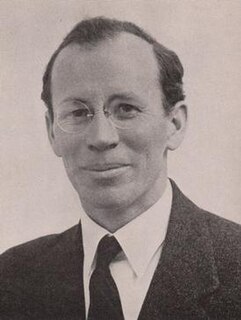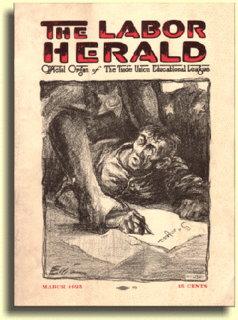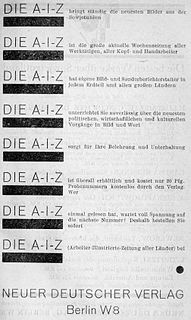Organizational History
Early work
The Friends of Soviet Russia proved successful in raising funds for Russian relief, generating about $750,000 and clothing worth an additional $300,000 during the first 14 months of its existence. The funds were raised transparently, with the name of each donor and the amount given published in each issue of Soviet Russia; detailed lists of expenditures, regularly audited, were also published. In round numbers, about 25% of the group's income went to administration and the costs of fundraising with the balance to relief.
The FSR was the American division of Workers International Relief, an international organization headed by the German Communist Willy Münzenberg. Membership in the FSR was open without regard to an individual's politics, but the organizational apparatus was tightly controlled by dedicated adherents of the Communist movement. In the documents of the underground Communist Party of the day, the ALA was referred to as "the A" and the FSR (or "Fessar") as "the B."
The FSR published a program in December 1922 which listed the group's aims: (1) to advocate the extension of credits to and recognition of the Soviet government; (2) to raise and distribute funds for clothing and food for the needy of Soviet Russia, to be distributed via the Soviet government "regardless of their political opinions"; (3) to agitate and demonstrate for non-intervention in the affairs of the Russian people in determining their form of government; (4) to raise funds for tools for the reconstruction of Soviet industry; and (5) to disseminate "truthful news" about Soviet Russia and build sympathetic sentiment. [1]
Structure and relations with other organizations
The FSR was structured around over 200 organized branches around the country, which raised funds to support the relief effort and the organization directing it. It maintained an office in New York and a paid staff of about 40 "organizers", members of the Workers Party of America (WPA), some of whom were engaged to travel the country speaking on behalf of the organization and engaging in politics "in their free time." In this sense, the FSR subsidized WPA activity by providing paid employment for some of its leading cadres.
This structure drew the ire of the opponents of the WPA, particularly Abraham Cahan, editor of the Socialist Party-affiliated Yiddish daily The Jewish Daily Forward , which began making charges of irregularity and extravagance in the handling of funds on the part of FSR in editorials and news stories in the summer of 1922. In response to these charges, the FSR appointed an "Investigating Committee of Five", including Roger N. Baldwin of the ACLU, Norman Thomas of the League for Industrial Democracy, Robert Morss Lovett of the liberal magazine The New Republic , Timothy Healy of the Stationary Fireman's Union, and attorney Walter Nelles. While the last-mention later recused himself to avoid possible charges of conflict of interest, the other four members of the committee issued a report at the end of October 1922 essentially clearing the FSR of wrongdoing and attributing the charges against the group to "factional interests."
Publications
The organ of the FSR was the magazine Soviet Russia, a plain-paper magazine which had originated as the journal of the Russian Soviet Government Bureau (RSGB), headed by Ludwig Martens in New York in 1919. The Martens Bureau had first sent out 13 issues of a weekly news sheet called The Weekly Bulletin of the Bureau of Information of The Soviet Union, intended as a sort of news service for the used of other periodicals but had decided to issue its own magazine starting June 7, 1919. [2] The RSGB stated that its new official magazine "is published in order to acquaint the people of the United States with the real conditions in russia and to combat the campaign of deliberate misrepresentation which is being waged by enemies of the Russian workers..." [3]
As the government of Soviet Russia was not recognized by the government of the United States, Martens was forced to shut down his bureau and leave the country in 1920. To some extent, Friends of Soviet Russia seems to have emerged as a publishing unit to keep this magazine alive. The group had a more important function, however, that being the raising of funds for relief of the devastating famine in Soviet Russia in 1921. The group briefly issued and additional typeset newsletter in conjunction with this effort, Russian Famine Relief Bulletin, although Soviet Russia rapidly absorbed this auxiliary publication's function.
From its earliest days Soviet Russia magazine was essentially a Communist publication, regularly printing articles by Soviet leaders such as Zinoviev, Trotsky, and Radek about matters of Soviet internal policy and foreign relations. The magazine covered the Russian Civil War and post-war diplomatic relations, economic reconstruction in Russia, and domestic political affairs, such as the show trial of the leaders of the Socialist-Revolutionary Party in 1922. This magazine was a bi-weekly for most of the time it was under FSR auspices, switching over to a monthly publication schedule under editor Eugene Lyons in December 1922. Effective with the January 1923 issue, the magazine moved to glossy paper with a new name — Soviet Russia Pictorial .
In late 1923 and 1924, in response to the economic chaos in Germany, in particular among the German working class following the failure of the October 1923 revolution, the FSR changed its name (briefly) to "the Friends of Soviet Russia and Workers' Germany" in an effort to increase its fundraising appeal. This interlude proved brief, and the group was not long in reverting to its original name.
Near the end of 1924 the magazine was merged with the CP's arts-and-theory magazine, The Liberator , and the Trade Union Educational League's monthly organ, The Labor Herald, to form The Workers Monthly in a 3-for-1 combination. This merger was probably driven by the financial concerns of the WPA and clearly underlines the connection of the FSR to the organized American Communist movement.
Friends of the Soviet Union
In November 1927 the Communist International established the International Association of Friends of the Soviet Union as a new central authority for the various national Soviet Friendship Societies which had been established around the world. [4] In tandem with the move to this new central authority, names of the friendship societies (including the American) were standardized under the name Friends of the Soviet Union (FSU). The FSU continued forward as the publisher of a pictorial monthly magazine Soviet Russia Today.

Harold or "Hal" Ware was an American Marxist, regarded as one of the Communist Party's top experts on agriculture. He was employed by a federal New Deal agency in the 1930s. He is alleged to have been a Soviet spy and is understood to have founded the "Ware Group," a covert group of operatives within the United States government aiding Soviet intelligence agents.

The Trade Union Educational League (TUEL) was established by William Z. Foster in 1920 as a means of uniting radicals within various trade unions for a common plan of action. The group was subsidized by the Communist International via the Workers (Communist) Party of America from 1922. The organization did not collect membership dues but instead ostensibly sought to both fund itself and to spread its ideas through the sale of pamphlets and circulation of a monthly magazine.

The Russian famine of 1921–1922, also known as the Povolzhye famine, was a severe famine in the Russian Soviet Federative Socialist Republic which began early in the spring of 1921 and lasted through 1922. The famine resulted from the combined effects of economic disturbance because of the Russian Revolution and Russian Civil War, the government policy of war communism, exacerbated by rail systems that could not distribute food efficiently.

American Relief Administration (ARA) was an American relief mission to Europe and later post-revolutionary Russia after World War I. Herbert Hoover, future president of the United States, was the program director.

Arbeiter-Illustrierte-Zeitung or AIZ was a German illustrated magazine published between 1924 and March 1933 in Berlin, and afterward in Prague and finally Paris until 1938. Anti-Fascism and pro-Communism in stance, it was published by Willi Münzenberg and is best remembered for the propagandistic photomontages of John Heartfield.
The Workers International Relief (WIR) — also known as Internationale Arbeiter-Hilfe (IAH) in German and as Международная рабочая помощь in Russian — was an adjunct of the Communist International initially formed to channel relief from international working class organizations and communist parties to famine-stricken Soviet Russia. The organization, based in Berlin, later produced films and coordinated propaganda efforts on behalf of the USSR.
The International Association of Friends of the Soviet Union was an organization formed on the initiative of the Communist International in 1927, with the purpose of coordinating solidarity efforts with the Soviet Union around the world. It grew out of existing initiatives like Friends of Soviet Russia in the United States, the Association of Friends of the New Russia in Germany, and the Hands Off Russia campaign that had emerged during the early 1920s in Great Britain and elsewhere.

The 1921–1922 famine in Tatarstan was a period of mass starvation and drought that took place in the Tatar ASSR as a result of the Russian Civil War, in which 500,000 to 2,000,000 peasants died. The event was part of the greater Russian famine of 1921–22 that affected other parts of the USSR, in which up 5,000,000 people died in total. According to Roman Serbyn, a professor of Russian and East European history, the Tatarstan famine was the first man-made famine in the Soviet Union and systematically targeted ethnic minorities such as Volga Tatars and Volga Germans.

The Russian Soviet Government Bureau (1919-1921), sometimes known as the "Soviet Bureau," was an unofficial diplomatic organization established by the Russian Soviet Federative Socialist Republic in the United States during the Russian Civil War. The Soviet Bureau primarily functioned as a trade and information agency of the Soviet government. Suspected of engaging in political subversion, the Soviet Bureau was raided by law enforcement authorities at the behest of the Lusk Committee of the New York State legislature in 1919. The Bureau was terminated early in 1921.
Walter Nelles (1883–1937) was an American lawyer and law professor. Nelles is best remembered as the co-founder and first chief legal counsel of the National Civil Liberties Bureau and its successor, the American Civil Liberties Union. In this connection, Nelles achieved public notice for his legal work on behalf of pacifists charged with violating the Espionage Act during World War I and in other politically charged civil rights and constitutional law cases in later years.

Louis C. Fraina was a founding member of the American Communist Party in 1919. After running afoul of the Communist International in 1921 over the alleged misappropriation of funds, Fraina left the organized radical movement, emerging in 1926 as a left wing public intellectual by the name of Lewis Corey. During the McCarthy era, deportation proceedings were initiated against Fraina-Corey. After a protracted legal battle, Corey died of a cerebral hemorrhage before the action against him was formally abandoned.

During the ten decades since its establishment in 1919, the Communist Party USA produced or inspired a vast array of newspapers and magazines in the English language.

Robert Williams Dunn (1895–1977) was an American political activist and economic researcher. Dunn was an active member of the American Civil Liberties Union from its creation, serving on that group's National Committee from 1923 and on its board of directors from 1933 to 1941. Dunn was the author of a number of books and pamphlets on economic themes relating to the working class published by the Communist Party USA.
During the nine decades since its establishment in 1919, the Communist Party USA produced or inspired a vast array of newspapers and magazines in at least 25 different languages. This list of the Non-English press of the Communist Party USA provides basic information on each title, along with links to pages dealing with specific publications in greater depth.
John J. "Johnny" Ballam was an American Marxist political activist and trade union organizer. He is best remembered as a founding member and one of the pioneer leaders of the Communist Party of America and as a leader of the Trade Union Unity League in the textile industry during the 1930s.

The Workers Defense Union (WDU) was a legal defense organization in the United States, established in New York City in November 1918 to lend aid in cases involving trade union and radical political activists. The group was organized by Industrial Workers of the World organizer Elizabeth Gurley Flynn, working closely with radical trade unionist Fred Biedenkapp. Both would subsequently become active members of the Workers (Communist) Party of America. The WDU became a local affiliate of the American Civil Liberties Union in 1920, with Flynn joining the National Committee of that organization, before finally dissolving as an independent entity in 1923.
The International Labor Defense (ILD) (1925–1947) was a legal advocacy organization established in 1925 in the United States as the American section of the Comintern's International Red Aid network. The ILD defended Sacco and Vanzetti, was active in the anti-lynching, movements for civil rights, and prominently participated in the defense and legal appeals in the cause célèbre of the Scottsboro Boys in the early 1930s. Its work contributed to the appeal of the Communist Party among African Americans in the South. In addition to fundraising for defense and assisting in defense strategies, from January 1926 it published Labor Defender, a monthly illustrated magazine that achieved wide circulation. In 1946 the ILD was merged with the National Federation for Constitutional Liberties to form the Civil Rights Congress, which served as the new legal defense organization of the Communist Party USA. It intended to expand its appeal, especially to African Americans in the South. In several prominent cases in which blacks had been sentenced to death in the South, the CRC campaigned on behalf of black defendants. It had some conflict with former allies, such as the NAACP, and became increasingly isolated. Because of federal government pressure against organizations it considered subversive, such as the CRC, it became less useful in representing defendants in criminal justice cases. The CRC was dissolved in 1956. At the same time, in this period, black leaders were expanding the activities and reach of the Civil Rights Movement. In 1954, in a case managed by the NAACP, the US Supreme Court ruled in Brown v. Board of Education that segregation of public schools was unconstitutional.

James Patrick Cannon was an American Trotskyist and a leader of the Socialist Workers Party.
The American Volga Relief Society was a German American non-governmental organization that provided relief and supplies to ethnically German settlements in the area around the Volga River. The group was active following World War I, during the period between 1921 and 1924. The organization officially disbanded in 1926, though private donations continued until the 1930s.

The 1921–1923 famine in Ukraine was a disaster that occurred mostly in the southern steppe region of Ukraine. The number of fatalities is estimated between 200,000 and 1,000,000, though no systematic records were made during this period.













